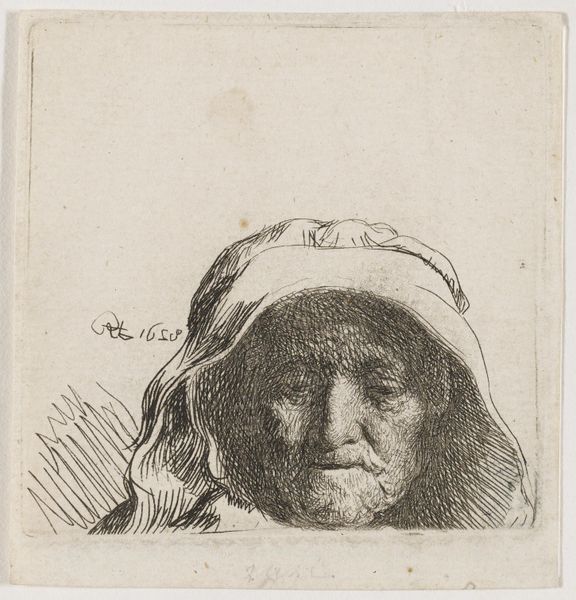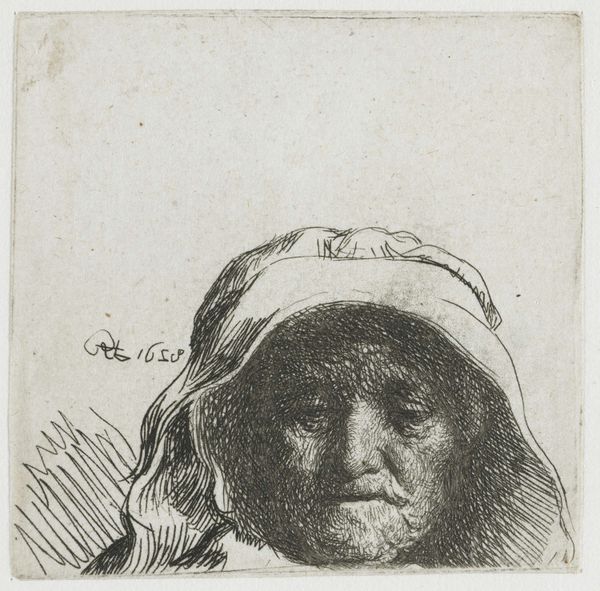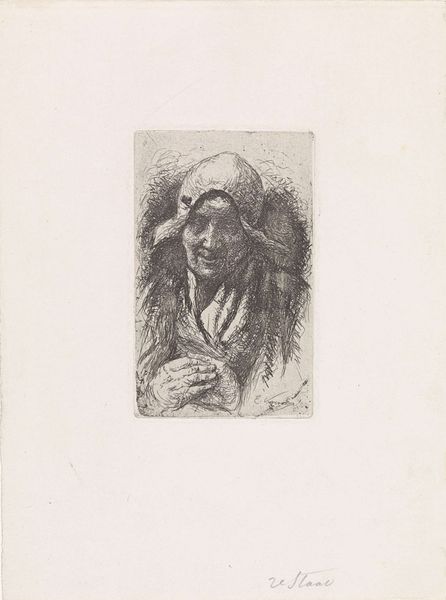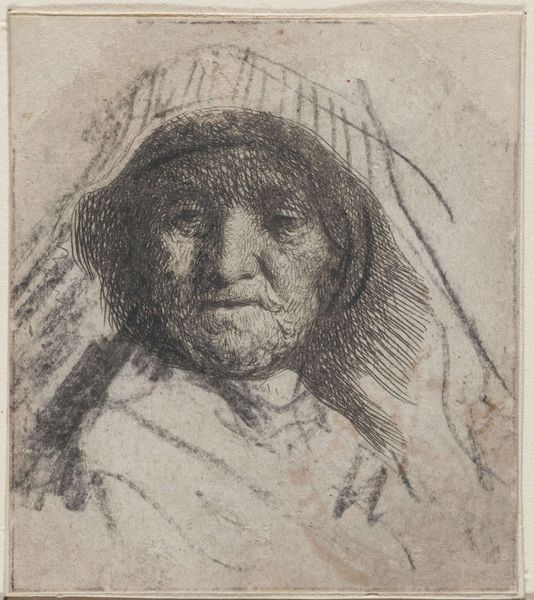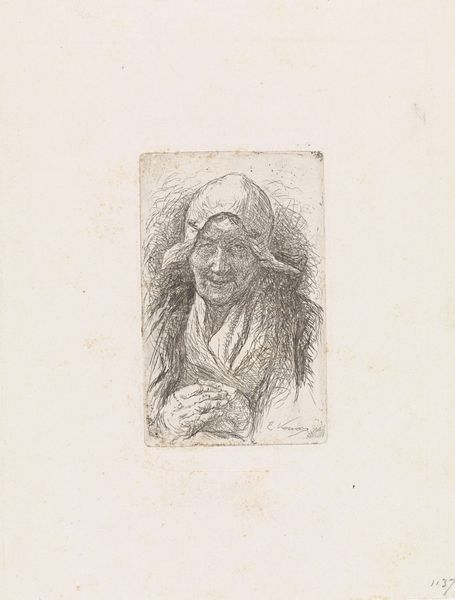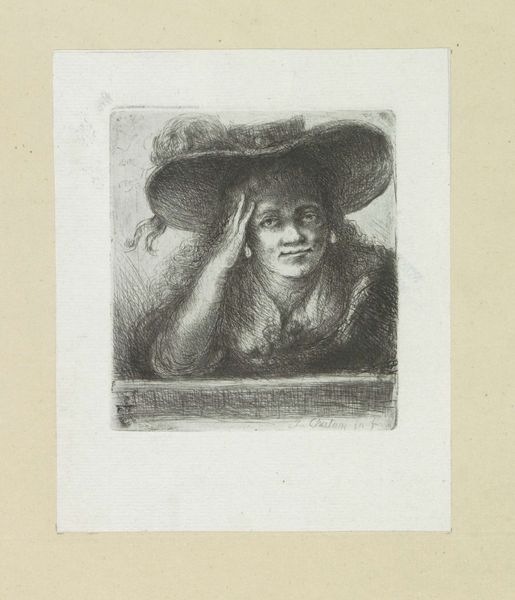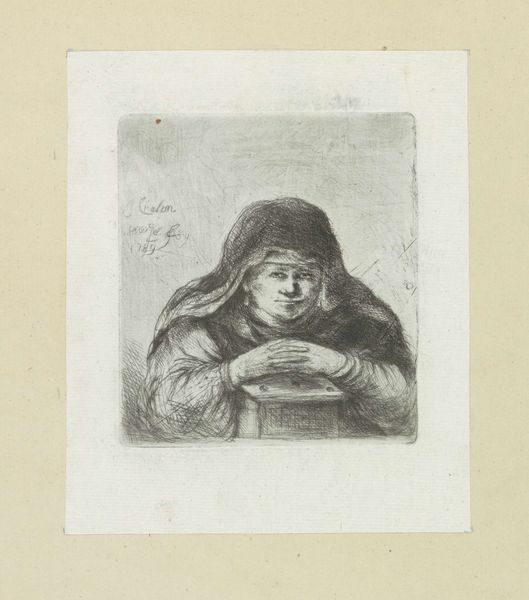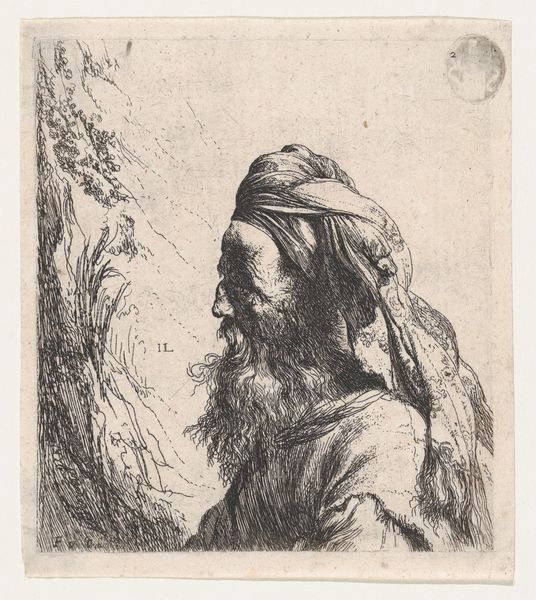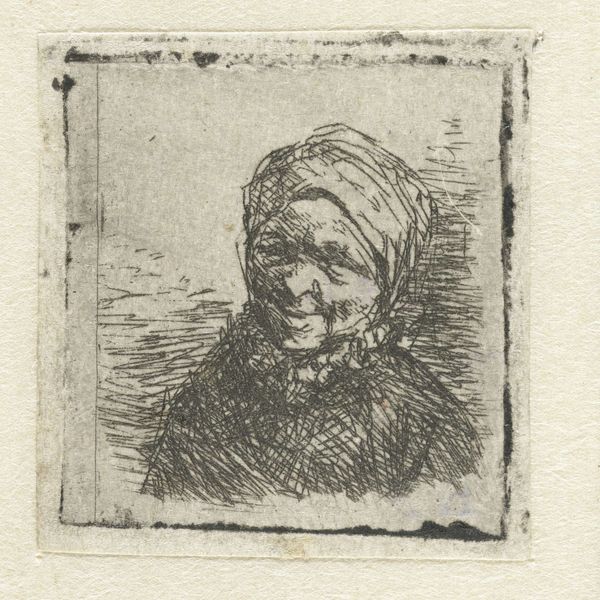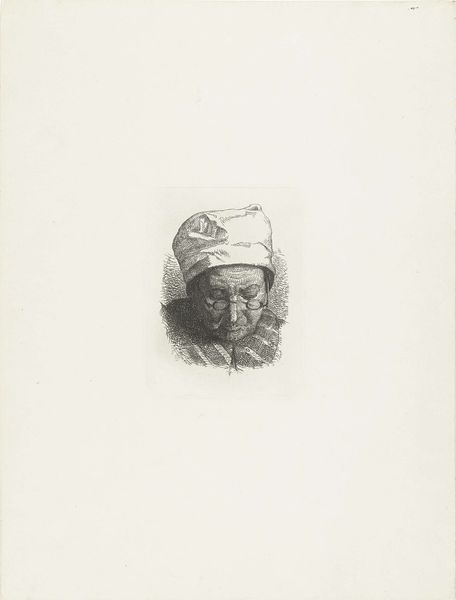
print, etching
#
portrait
#
self-portrait
#
baroque
#
dutch-golden-age
# print
#
etching
#
figuration
#
pencil drawing
#
line
Dimensions: 2 7/16 x 2 1/2 in. (6.2 x 6.4 cm) (plate)
Copyright: Public Domain
Editor: Here we have Rembrandt van Rijn’s "The Artist's Mother (head only)," created in 1628 using etching. It’s a very small print. I'm immediately drawn to the intense concentration of lines used to create shadow and form. What elements stand out to you from a structural point of view? Curator: The formal arrangement presents a fascinating study in contrasts. Consider how Rembrandt has employed dense, almost chaotic, hatching to model the face and head covering. Note how that contrasts with the relatively untouched space of the background. This immediately draws our eye to the central form. Editor: Yes, there's an almost tactile quality to the etching! But beyond that initial impact, what can you read into those choices, structurally speaking? Curator: Observe the interplay of line and void. Rembrandt hasn’t simply depicted a face; he's constructed a network of marks, a topography of ink on paper. The etching technique, with its capacity for intricate detail and tonal variation, lends itself beautifully to the creation of depth and volume. Do you agree? Editor: I do! The use of line weight creates such depth. What about the asymmetry in the work – is there anything to unpack there? Curator: Indeed. The asymmetry of the composition, with the subject's face slightly off-center, disrupts any sense of rigid formality. Instead, there’s a sense of dynamism and immediacy. This formal decision infuses the portrait with a palpable sense of life. The diagonal hatching also serves to break up the rigid geometry of the blank square format. Editor: That makes a lot of sense! I didn't pick up on that before. It’s amazing how much can be understood by focusing on these formal decisions alone. Curator: Precisely. The formal qualities aren't merely decorative; they actively shape our perception and interpretation of the artwork.
Comments
minneapolisinstituteofart almost 2 years ago
⋮
Deeply wrinkled, careworn faces fascinated Rembrandt, as is evident in his portraits of his mother, who was a cooperative sitter early in his career. (While scholars believe the subject of these prints is Rembrandt's mother, it has never been proved.) He portrayed this model ten times, and she appeared in his colleagues' work, too. In 1633 Rembrandt started signing just his first name to his prints, putting himself in the company of the great one-name Italians-Michelangelo, Leonardo, Titian, and Raphael. Rembrandt's last name came from the site of his great-grandfather's windmill, on the banks of the Rhine (Rijn) River.
Join the conversation
Join millions of artists and users on Artera today and experience the ultimate creative platform.
